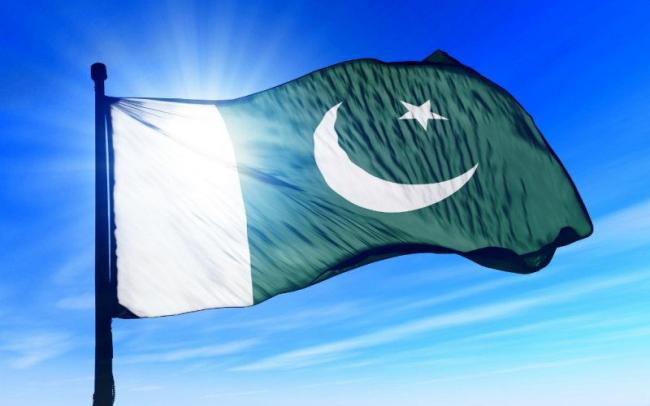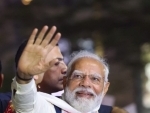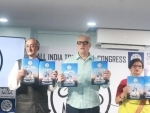
Kurram Agency: Sectarian Monster Revisited
Citing the same reason, the group had also claimed the December 13, 2015, suicide attack in a makeshift market in Parachinar, which killed 25 persons and injured 62. A statement released to a foreign media channel and attributed to the spokesman of the Jhangvi group, Ali bin Sufian, declared that the attack had been carried out against Shia elements who were supporting Syrian President Bashar al-Assad and the Iranian government, adding, "We warn... parents that if they don't stop their children from ongoing (sic) conflict in Syria they should remain prepared for more such attacks."
This is the third major attack in Parachinar during the first half of 2017. At least 24 persons were killed and 100 were injured in a suicide attack on an Imambargah in the Noor market area of Parachinar on March 31, 2017. The explosion took place as people gathered for Friday prayers near the women´s entrance of the Imambargah. A witness stated that security personnel at the Imambargah were checking devotees when an unidentified person parked a car next to the building, which then exploded. Tehreek-e-Taliban Pakistan (TTP) faction Jama'at-ul-Ahrar (JuA) claimed responsibility for the attack. The attack was part of TTP's "Operation Ghazi" and Shias were the targets, according to the outfit's statement to the media.
On January 21, 2017, 25 persons were killed and more than 87 injured in a bomb explosion at the Sabzi Mandi (vegetable market) area, again in Parachinar town, in the morning when the market was crowded with retailers buying fruits and vegetables. In a text message sent to journalists, the LeJ-al-Alami claimed that, along with the TTP splinter, Shehryar Mehsud group, it had carried out the attack. In a separate statement, the spokesman for TTP, Mohammad Khurassani, declared, "A well-trained fighter, Saifullah alias Bilal, carried out a suicide attack in Parachinar. Saifullah attacked headquarters of enemies of Islam who are involved in extrajudicial killing of our suppressed associates. He avenged murders of Malik Ishaq, Noor ul Amin, Asif Chhoto and many other associates, who were killed in fake police encounters."
Nevertheless, the Kurram Agency, long known for sectarian violence, has seen a definite decline in such incidents in recent years, despite the fresh attacks, but Shia dominated Parachinar in the Upper Kurram Agency remains a principal target for Sunni sectarian terrorist formations. Built by the British Royal Army in the 1890s, the town is the headquarters of the Kurram Agency, housing offices of the political administration, units of the Army and Frontier Corps, and a civilian population of less than 100,000. Kurram comprises three sub-divisions: Upper, Central and Lower Kurram. Some 58 per cent of its population is Sunni, and 42 per cent Shia (according to the 1998 Census). The majority of Shias live in Upper Kurram, while Sunnis dominate Lower and Central Kurram. The present cycle of escalation started when three people were killed and 13 were injured in an attack on a Shia Imambargah in the morning of April 6, 2007. Clashes in Kurram from November 2007 to 2010 left over 3,000 people dead, while thousands of families were forced to flee their homes.
Unlike other tribal agencies of FATA, the dynamics in Kurram are different because of the sectarian divide and the geo-strategic location of the Agency. Kurram is surrounded by Afghanistan from three sides and has remained in turmoil since 1980, after the Soviet Union invaded Afghanistan. Thrust into Afghanistan on three of its sides, the Kurram Agency has always been of critical importance for Pakistan. It shares the major portion of its borders with the troubled Logar, Paktia, Khost and Nangarhar Provinces of Afghanistan. The al Qaeda and Taliban infested Tora Bora Mountain range in the Nangarhar Province shares its boundaries with the Kurram Agency. In the north-east, Kurram abuts the Khyber Agency; the Orakzai Agency lies to its east; the Hangu District of Khyber Pakhtunkhwa (KP) is on its south-east; and the North Waziristan Agency lies south, all in Pakistan. The Kurram Agency connects the tribal areas of Pakistan to Afghanistan through lower, central and upper Kurram. Crucially, the Thal-Parachinar route is the shortest route to Kabul from Peshawar.
Apart from the recent suicide attacks, the broad trend of decline in sectarian incidents has given some relief to locals. During the sectarian violence of 2007-11, at least 1,167 people were killed while more than four thousand houses were destroyed in the Kurram Agency. The National Assembly's Standing Committee on Human Rights was informed, on December 11, 2011, that during the sectarian violence 745 Shia were killed and 965 were injured; while 422 Sunnis were killed and 800 injured. However, the fatalities figure in sectarian violence during the succeeding five years (2012-16) was been reduced to a total of 208 fatalities. This has, however, come at the cost of a simultaneous increase in terrorist and militant activities from across the Afghan border. While the security situation has witnessed remarkable improvements, particularly after Army operations in the adjacent Orakzai and North Waziristan agencies, the presence of TTP and IS on the abutting Afghan territory has created new threats for the Kurram Agency. Sajid Hussain Turi, Member of National Assembly (MNA), thus observed that the people did not feel safe from the Afghanistan side, as border posts were being attacked from Afghan territory.
The anxieties of the tribal elders have been reconfirmed in a tweet by Inter-Services Public Relations (ISPR) Director General (DG) Major General Asif Ghafoor, who attributed recent terrorist incidents to 'sanctuaries' in neighbouring Afghanistan. The tweet, read: "Recent terrorist incidents linked to sanctuaries across."
Due to the persistent threat from Afghanistan, local authorities have asked villagers residing along the border to set up posts on hilltops and to keep vigil during the night to prevent any attack from the Paktia and Khost Provinces. On April 3, 2016, the Assistant Political Agent, Shahid Ali Khan, and the Commandant of the Kurram Militia, Colonel Umar Malik, met elders of the Turi, Bangash and Mangal tribes near Parachinar, to mobilise the tribal people against the threat. An elder from Borki disclosed, "Officials say that IS and TTP's fighters were involved in attacks on the security posts. People are not only keeping vigil during night, but elders of Borki and Kherlachi have also provided four heavy machine guns and ammunition to the paramilitary forces as a gesture of support."
However, after some months of this arrangement, the Government launched a deweaopnisation campaign in Kurram Agency on December 27, 2016, asking the local tribal people to hand over weapons to the administration. Brigadier Malak Amir Mohammad Khan, the local Brigade Commander, asked tribal elders at a jirga(tribal council) in Parachinar to voluntarily surrender their "heavy weapons" to the political administration within 45 days, threatening 'strict action' against violators of the order would be taken. Brigadier Khan added, "All the tribal areas had been cleansed of terrorists and compliance of law is the collective responsibility of every citizen."
Tribal elders in Parachinar, however, remained apprehensive, as the recent history of violence against the tribes and the fragile security situation in Afghanistan continued to threaten security in the Agency. MNA Sajid Hussain Turi thus observed, "The so-called Islamic State has headquarters in our backyard (Nangarhar). Disarming Turi and Bangash tribes in upper and lower parts of Kurram is very inappropriate. Any action against tribes at this moment will create problems." On February 7, 2017, hundreds of pamphlets containing threats were allegedly distributed by Daesh in the Kurram Agency on the Pakistani side of the Durand Line, threatening attacks in specific tribal areas. The Daesh pamphlet declared, in the local language, Pashto, "We have achieved our goals in Afghanistan and are now ready to confront Shia renouncers in Pakistan's tribal areas."
Haji Faqir Hussain, secretary of the Anjuman-e-Hussainia, the central representative body of various Shia tribes in Kurram, noted that the indifferent policies of successive Governments over the past decades had forced the local population to secure themselves against hostile elements within and outside the Valley: "The administration can't guarantee our safety, keeping in view the harsh realities of recent past. Disarming people at this moment is tantamount to tying their hands and feet."
After the two suicide attacks, the Government came back from deep slumber and reverted to the same security arrangements with the tribes in the Agency. On April 27, 2017, senior security officials convened a jirga of Turi and Bangash tribes in Parachinar and directed them to observe 'extreme vigilance' to prevent terrorist attacks in the area, as an alert has been issued. The officials asked the elders to keep all sensitive places, including important buildings, hospitals and schools, under strict check. Following the red alert issued by the political administration and security agencies on April 6, 2017, Security Forces (SFs) increased patrols and established six additional checkpoints inside the town. An aura of fear and uncertainty prevailed across the area after the red alert and reports that suicide bombers and fighters of the Islamic State group had sneaked into Kurram Agency from across the Afghan border. In response, the Education Department announced a three-day closure of all institutions in Kurram. Tribesmen through the public address systems at mosques, made announcements about the threat. Armed volunteers set up bunkers on the roof of houses and near the city.
A significant Army presence had already been in place in Parachinar in particular, and in the Kurram Agency, in general, as part of Operation Radd-ul-Fasaad(Elimination of Discord) which was launched in February 22, 2017, after a series of terrorist attacks across Pakistan in the month of January. On April 10, 2017, SFs declared several localities of Parachinar "red zones" in the wake of the March 31suicide attack. Kurram Militia, a wing of the Frontier Corps, informed people through pamphlets that the central Imambargah, Punjabi Bazaar, Hazara Colony and its adjacent commercial and residential areas had been included in the red zone.
Despite the high security alert and arrangements, the devastating terrorist attack has exposed gaping holes in the security apparatus, and in the Government's claims of having neutralized terrorism in the tribal areas.
Support Our Journalism
We cannot do without you.. your contribution supports unbiased journalism
IBNS is not driven by any ism- not wokeism, not racism, not skewed secularism, not hyper right-wing or left liberal ideals, nor by any hardline religious beliefs or hyper nationalism. We want to serve you good old objective news, as they are. We do not judge or preach. We let people decide for themselves. We only try to present factual and well-sourced news.







